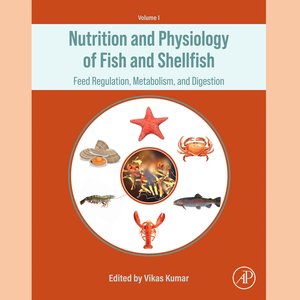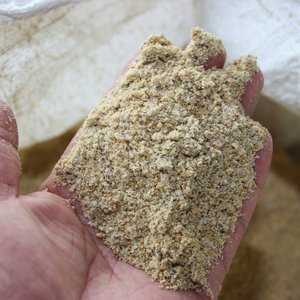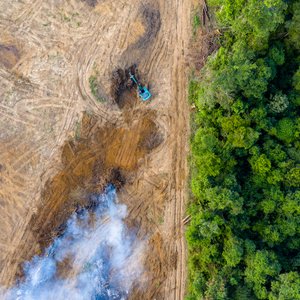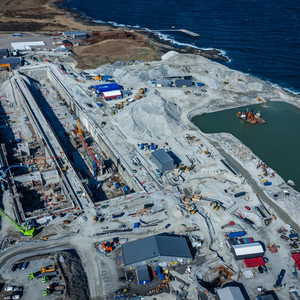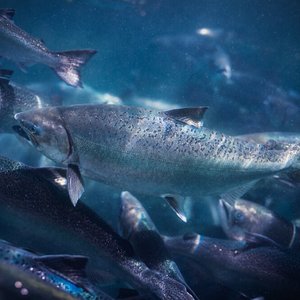The shift from marine to more plant-based ingredients in Norway\'s fish food may increase the level of contaminants in the feed. NIFES research is building knowledge on the potential impacts of new pesticides in fish feed on fish health and seafood safety.
By Monica Sanden, Senior Scientist, NIFES
The past 15 years have seen major changes in the raw materials used in Norwegian fish feed. The changes can largely be ascribed to the growth in fish farming, and thus in feed production, that has taken place at the same time as the supply of marine ingredients has remained relatively stable. In this article, fishmeal and fish oil are referred to as the ‘blue’ marine feed ingredients, while plant ingredients are referred to as the ‘green’ feed ingredients. If we go back in time and look at a typical feed from the early 1990s, the content of green ingredients was about 10%. Today’s fish feed contain over 70% green ingredients that contribute with necessary nutrients to the fish diet.
But we also know that both the blue and the green ingredients in fish feed can contain pesticide residues. Fish oil and other fatty foods and raw materials can contain residues of, for example, DDT, formerly used as a pesticide and which is now referred to as an environmental contaminant. We know a lot about these ‘blue’ pesticides and their presence in Norwegian fish feed show a general downward trend with the decline in fish oil usage.
If we look at the raw materials used in fish feed today, we see that in addition to fishmeal and fish oil, soy protein concentrate and rapeseed oil are the main replacers. These feed ingredients are global commodities imported from parts of the world whose regulations and agricultural practices may differ from those of Europe and Norway.
We see that green feed ingredients can contain new pesticides not previously associated with aquaculture. Currently, weknow little about the effect of these pesticides on fish health and food safety. NIFES’s monitoring programme for fish feed in Norway conducted on commission for the Norwegian Food Safety Authority, shows residues of chlorpyrifos and pirimiphos in fish feed. The concentration of chlorpyrifos and pirimiphos reported in fish feed are similar to the residue levels found in imported fruits like bananas, apples and pears. NIFES has previously found that chlorpyrifos can affect fat metabolism in Atlantic salmon. Since these results werebased on in vitro cell culture studies, we do not yet know what practical implications this would have on fish health in a feeding situation.
However, even if residues of pesticides are found in fish feed, it does not necessarily mean that it is a risk to fish health. We must look at the feed pesticide dose and how readily it is absorbed in the intestine. In research, several biomarkers are used to examine fish health. As in human subjects, analyses of blood samples from fish can tell us if there are changes in the amount of red blood cells or effects on stress hormones. Perhaps results will show that the fish responds by producing more red blood cells as the blood count drops, in that case it may not necessarily be any challenge to fish health.. When it comes to food safety, we need to know what happens to the pesticide in the fish body. It is not necessarily a problem for food safety if the fish excrete the pesticide and do not store it in the fillets that we eat.
At present we are ready to further strengthen our research efforts in relation to the new pesticides. A new four-year project funded by the Research Council of Norway and gouverned by NIFES has been initiated to answer the questions discussed above. The shift from blue to green has been an necessary action in order to increase seafood production. With this shift, Norway also needs to build knowledge on the potential impacts of the “green” pesticides on fish health and seafood safety.


